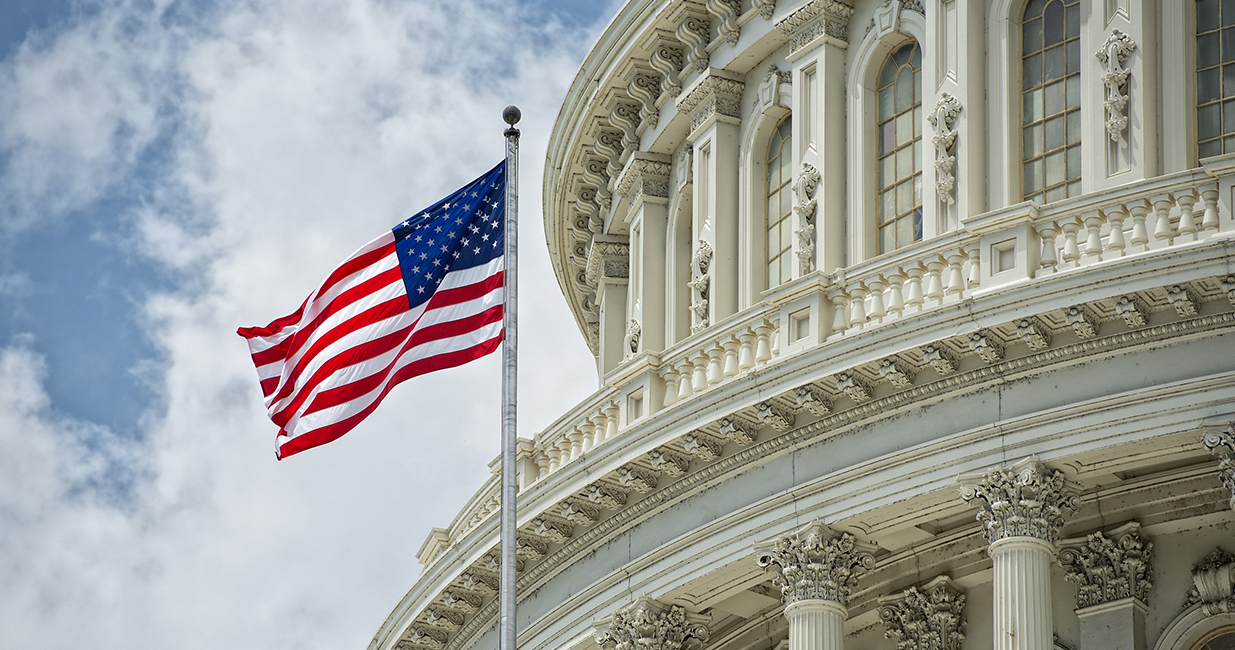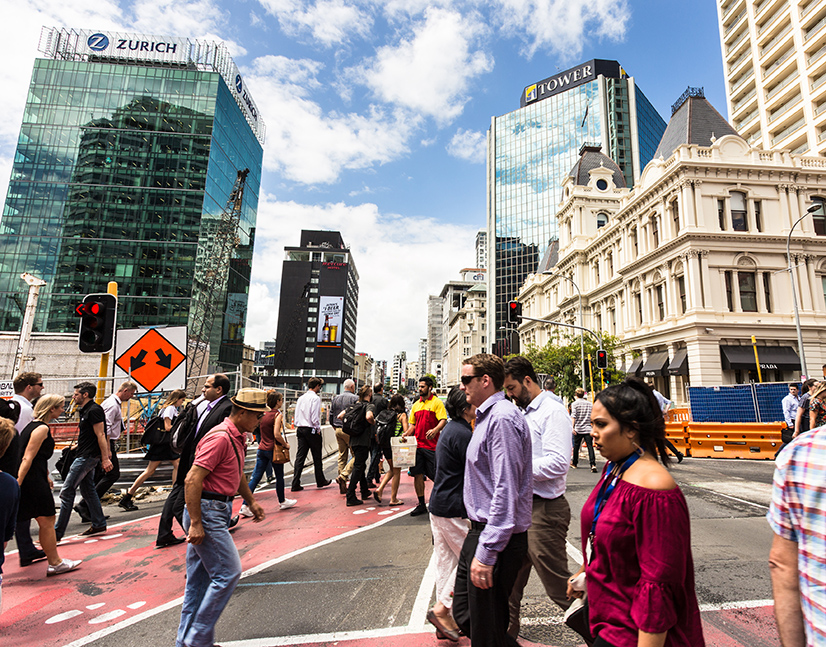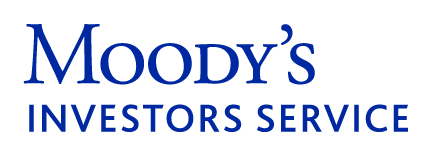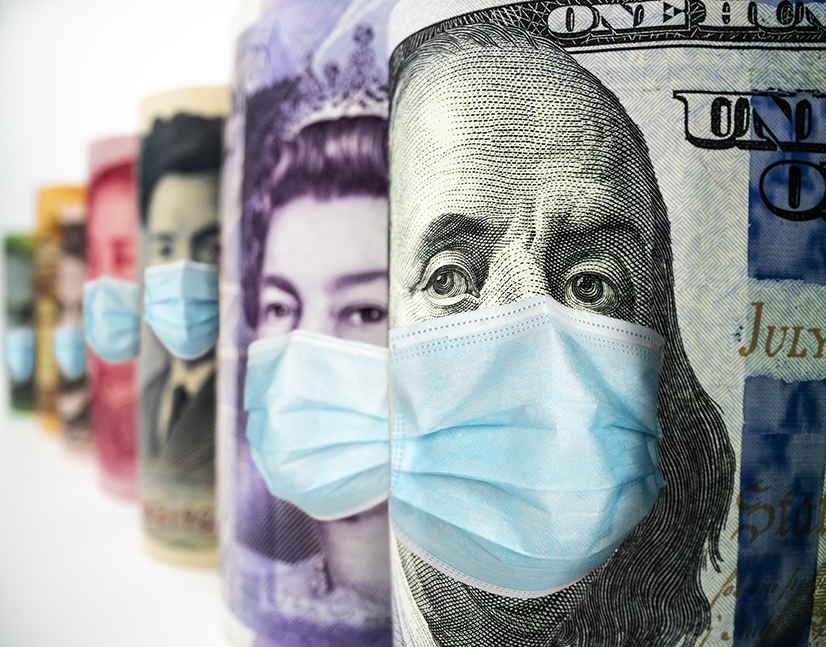
US market participants take stock as the election dust settles
On 12 November, just a week after perhaps the most contentious and controversial election in US history, KangaNews convened a panel of US-based market participants to discuss the fallout as part of the KangaNews Debt Capital Markets Summit 2020 webinar series. The conversation covered the impact of a divided government, monetary and fiscal policy, and the US’s place on the world stage.

The headline sponsors of the KangaNews Debt Capital Markets Summit 2020 webinar series are ANZ, National Australia Bank, RBC Capital Markets, TD Securities and Westpac Institutional Bank. Supporting sponsors are Australian Securities Exchange, Equity Trustees, Fitch Ratings, King & Wood Mallesons, Moody’s Investors Service and S&P Global Ratings. KangaNews would like to thank all the sponsors for their support.
DIVIDED GOVERNMENT
Franulovich Let’s start with the likely shape of US government overall, noting that the Senate – notwithstanding a double run-off in Georgia – now seems likely to remain in Republican hands. Will this mean an ineffectual government as Senate leader Mitch McConnell maintains the goal of blocking all Democratic legislation, or could a ‘hands across the aisle’ Joe Biden presidency be at least somewhat effective?
Porcelli We should not assume that the Georgia senate run-offs are a foregone conclusion, though my sense is that the Republicans will probably win one of the two races. If the base case is for the Republicans to win at least one of the seats we can work from there.
We have heard a million times that gridlock tends to be good from a market perspective. History is on the side of this argument.
There is a narrative that Biden has worked with folks on the other side of the aisle, but I would make a cautionary remark on this. Biden was never a president trying to reach across the aisle. Biden also was not reaching across the aisle with a vice president who, whether it be perception or reality, is assumed to be extremely left leaning.
I think the Republicans may be loathe to give the Biden administration many wins over the coming year or two while the composition of Congress looks as it does today. In the back of their minds they will already be thinking about 2024.
This means I do not think a lot will get done. There is the theory of low-hanging fruit on an infrastructure bill, for instance – but I would not put high odds on this being achieved.
I do think there will be some stimulus, though – and it could even happen during the lame-duck session. COVID-19 is already resurgent and this could push stimulus across the line before Biden’s inauguration. Either way, there will be a stimulus plan at some stage. But it may be a lot less than what is currently being talked about.
Lindbloom We’ll need to wait for just more than a month to see the final outcome in the Senate, but our base case is also that Republicans win one of those seats and retain a majority.
We are somewhat cautious on recent market sentiment. Perceptions of the ability of Democrats and Republicans to work together have been close to euphoria since the election. The idea of reaching across the aisle and the fact that Biden and McConnell have worked together in the past sounds very good, but the reality of what we have been through in the past four years could intrude upon it.
We have a ‘prove-it-to-us’ attitude on this, particularly given the valuations in markets recently. We also need to see who some of president-elect Biden’s cabinet selections are, which will play a very large role in the potential willingness of the parties to play nice.
If Georgia does not turn out the way we think and the Senate flips to the Democrats it will be a very different outcome. All in all, our base case is that we are likely to get a fiscal package. The question is whether it comes before year-end or after. I am relatively optimistic, but a lot of optimism has already been priced into markets.
Franulovich The market’s capacity to see the glass half full is remarkable. We considered a Biden presidency with a divided Congress the least favourable outcome for risk assets, but the reaction once we had confirmation of a Biden presidency was as if there were a blue wave.
Lake A lot of people spoke about a possible blue wave before the election and are now talking about how it did not emerge. The reality is it did emerge – there was a huge amount of support for Biden. But there was also a red wave, and the two have collided. The blue wave is bigger, but the victory by Biden is not exceptional by any means compared with results throughout US history.
This goes to the political motivations in the Senate and the House [of Representatives]. The Senate is where we are focused at the moment because it could end up remaining in favour of the Republicans. Either way, if you are a Republican in the Senate or the House you have probably won more votes than you have ever seen before – and this was because of Donald Trump.
Some of the behaviour going on now from the White House is strange to say the least, but we are not seeing Republicans coming out to contradict it. This does not bode well for bipartisanship and I agree that it is difficult to see a lot being achieved.
It is possible to imagine a stimulus bill happening during the lame-duck session and this would be very important. A lot of people are hurting and there has not been anything like the level of support rolled out in Australia and elsewhere. This pain is significant.
The health crisis in the US is escalating across the Midwest, where COVID-19 numbers are miles higher even than countries in Europe. One has to wonder whether this, combined with worsening jobless figures, will drive action. I can only hope – but I think it is incumbent on both sides of politics somehow to get a bill through as soon as possible.
There may not be much that happens in the next administration, but one thing that could happen – and what we are already seeing – is a level of basic order. Things like announcements coming in a press release that is coherent and spelled correctly.
This level of basic predictability is important. The single thing that chief executives and chairmen I have spoken to in the last six months have found hardest is that there does not seem to be much rationale driving political decisions.
Whether it is a left- or right-wing government, if it is following a particular strategy you can understand it and make an educated assumption on what will happen. This return to order and boring processes in Washington will be welcomed.
“I think the Republicans may be loathe to give the Biden administration many wins over the coming year or two while the composition of Congress looks as it does today. There is the theory of low-hanging fruit on an infrastructure bill, for instance – but I would not put high odds on this being achieved.”
Global influences
Market participants are hopeful of a more rules-based foreign and environmental approach under the incoming US administration, though policy outcomes may not change dramatically.
Lake There is a lot of talk about a “green new deal” but I do not think it will go anywhere, and this is probably not a good label for it anyway. We know significant underlying shifts are happening in the energy sector and that these require a substantial amount of investment. A lot of this is driven by economics – we do not have to get into an argument about whether it is greener or cleaner, we can just have a lower-cost source of energy.
A lot countries are now committed to net-zero carbon emissions by 2050, which increases the demand for and volume of all the things needed to drive this and in turn improves the economics.
With this backdrop, Biden will sign the Paris Accord again as soon as he can. I understand the incoming administration has a detailed plan for its energy policy and it is bringing a level of professionalism to the COVID-19 response. I suspect the administration around energy will be put in quickly.
Anyone who thinks Biden will be soft on China has not read enough of what he and his policy advisors have said. I think a firm hand with China will remain in place. We can expect, though, that it will be done in a more diplomatic way than under the prior administration.
STIMULUS REQUIREMENT
Franulovich McConnell is already making noises about only needing a relatively small stimulus. Are panellists starting to think the Fed [US Federal Reserve] may have to do more of the heavy lifting on stimulus than might be the case with a unified government? Could this bring negative rates back into the conversation despite the Fed’s expressed opposition to the idea? And how does Pfizer’s recent vaccine announcement factor into assumptions about the need for stimulus?
Porcelli Pfizer’s news will be greeted warmly by US households. Harris Poll has been doing a weekly COVID-19 poll since March and has a lot of data. One of the questions it asks is: if you catch COVID-19 do you think you will die? As one would expect, early on only a small percentage of people thought they would die if they caught the virus. This rose quickly, to around 50 per cent, and has gradually risen to around 55 per cent.
We all see images in the media of people out without masks and not practising social distancing, but for every one of those pictures there are probably five that show desolate store fronts, streets and roads. There is a massive fear factor still associated with the virus – as there should be.
We all knew a vaccine would come, but I think few people appreciated there would be one that is potentially this successful. From a behavioural perspective, I think it will have a big impact on consumers over the coming couple of quarters.
The proof of the pudding will be in the savings rate. In the US the savings rate is still incredibly elevated at near 15 per cent, which is unprecedented in modern US history. If the feel-good notion continues as I think it will, the rate will drop.
We all recognise the vaccine will not be widely distributed for months if not years, but I do not think distribution is the thing that will change behaviour. Knowing there is a backstop could immediately change some consumer behaviour.
The economy could gather momentum from Q1 to Q2 2021, but here we are in Q4 2020 with the virus resurgent. It will still be a struggle, in other words. We are predicting around 6 per cent growth in the US for full-year 2021. That would be unprecedented, and a lot is base effect from a poor 2020, but we expect it to generate momentum.
Franulovich How much optimism around the vaccine is baked into projections?
Porcelli We do not have a vaccine explicitly in our numbers so there may be some more juice if a vaccine is available. We will see how the savings rate unfolds and we will not rush to a judgement on our numbers.
We recognise some upside risk. Every time I go into a meeting I am asked whether there is more up- or downside risk relative to forecasts. I think the risk to our 6 per cent forecast is definitely to the upside.
Franulovich What are the other panellists’ growth outlooks, and how do fiscal stimulus and a vaccine factor in?
Lindbloom I think we all agree COVID-19 was a game changer. We have never before seen governments treat businesses and the economy as a patient by putting them in a coma, with the hope that we can get through the pandemic and then bring them out of a coma.
One reason we were optimistic early, from a market and asset-allocation perspective, was our expectation of monetary policy from the Fed and globally, as well as fiscal policy, being able to keep the patient alive.
We have continued to debate exactly what we need to see from the Fed and from fiscal policy. Fed chairman Jerome Powell has begged for more fiscal assistance to monetary policy.
It is possible that the vaccine is not a game changer. However, if COVID-19 was a game changer being able to deal with it over a period of time will also be one. The emphasis is on the period of time.
We do not think the Fed will change much, although we are having a debate around its plans for asset purchases – specifically whether it extends their duration. It is possible that the fiscal side will be less important next year if we start to see a vaccine distributed and the service side of the economy performing better.
We could see the emphasis of conversation change from a focus on the need for fiscal stimulus versus the game changer of actually getting past the virus.
We agree the split government means we are likely to see a smaller and more targeted package, for two reasons. First, by 31 December some of the programmes in place now will expire and some of the people on them will be hurting upon expiration. Second, both parties have Georgia on their mind so might want to agree to a smaller package, possibly somewhere closer to US$1 trillion than the US$3 trillion Democratic package we have heard about.
We are somewhat optimistic about the move from the need for fiscal stimulus to actually being able to get past this period with a vaccine. [National Institute of Allergy and Infectious Diseases director] Anthony Fauci estimates April is when a majority of people may be able to get a vaccine. We will see – but we are optimistic.
Lake I agree with everything that has been said. Tom Porcelli’s comment around the psychology of a potential vaccine is particularly significant. We are seeing a micro-example in New York, where by August the number of vacant apartments reached the highest level since data began. This is because of university students not coming back and employers telling people they will not be coming into the office until at least mid-2021.
People have changed their habits. Anything that makes people think it is safer to do the things they did before will be very important.
Another important factor in the US is how differently the pandemic and its impact plays out around the country. The unemployment rate varies greatly between states from some that have been barely affected to those with unemployment in the double digits. What people do for work and the industries affected will be very important.
Another big point is that for some of the biggest businesses in the US, such as Amazon, Google and Facebook, this has been a fantastic time. They have made a lot in advertising and everyone is shopping like mad online. These are not just US businesses: they earn significant revenue around the world.
This is great for those businesses but not for those who voted for Trump, a cohort which is significantly skewed toward those whose jobs are most at risk as automation continues to run its way through the workforce.
You won’t see these effects play out in the national numbers but there will be dramatically different experiences between the folk working in tech on the west coast, in finance on the east coast and those in the Midwest. The latter group are watching manufacturing die and a host of other jobs, in areas like retail and truck driving, go as processes are inevitably automated.
The big picture on jobs
Donald Trump did not bring manufacturing jobs back to the US, and Joe Biden’s presidency is no more likely to arrest the impact of automation on the local employment market.
Lake Two big issues are relevant for any country and must be on the minds of an administration in the US. This links to the relationship with China and other countries where many of the businesses that are growing are not actually creating many jobs.
The automation of manufacturing means you can make things closer to where they are needed so there is a shift in employment patterns and opportunities which is consistent with a more protectionist world view. You can speak to people that are quite far on the left of politics who think this is a logical way to go.
We may see activities that are designed to support and encourage the creation of jobs. This is one of the great challenges of our time, as automation of decision-making eats up white-collar jobs in the way it has taken out a lot of blue-collar manufacturing jobs.
The other thing that is a big challenge and is not going away is around data access, use of data and personal information, what is done with that using AI, and the lack of transparency around who is using what data for what purpose. We all sit here and have no knowledge of it.
The EU is beginning to act on this and I think it is another area where there must be pressure on governments to act. The US is home to some very big companies that make a lot of money out of this which may make it difficult to change anything, but we are in a world where there are issues around people’s opinions being manipulated by what they see on the internet. That is very challenging and deeply entwined with what is happening in US politics at the moment.
We may see activities that are designed to support and encourage the creation of jobs. This is one of the great challenges of our time, as automation of decision-making eats up white-collar jobs in the way it has taken out a lot of blue-collar manufacturing jobs.
“We are not losing a lot of sleep in the near term about the possibility of inflation running substantially higher. Markets are predicting an inflation rate in the high-1s for break-evens at the long-end of the curve and we are in line with this in the near term.”
RATES OUTLOOK
Franulovich There has been a fierce risk-on sentiment since the election. US fixed-income yields slumped as the widely tipped blue tide fizzled into a trickle but have since returned to 90+ basis points on the Pfizer vaccine breakthrough news. How much more upside is there and what happens to inflation if a vaccine is distributed in 2021?
Lindbloom This is a topic of hot debate, in our team and the market in general. We have been very calm about the idea that inflation globally will rise substantially. We have been hearing this for several years based on economic growth improving and it just has not eventuated – in the US or elsewhere.
From a fundamental point of view, we are not losing a lot of sleep in the near term about the possibility of inflation running substantially higher. Markets are predicting an inflation rate in the high-1s for break-evens at the long-end of the curve and we are in line with this in the near term.
In the longer term, we want to keep an open mind regarding fiscal and monetary policy, government policy, redistribution, global trade, productivity and others. There is a lot happening that we need to be conscious and aware of. Overall, we have maintained long duration in our portfolio based on our inflation outlook.
The second reason for this, though, is that as positive and euphoric investors have been since the election and vaccine news, it is entirely possible that this turns around again over the coming months, particularly if the vaccine timeline is extended.
We want to ensure we have a risk mitigator as part of our portfolios and we feel that long sovereign debt in select countries fits that bill, until we start to see proof that economies are advancing strongly and inflation is going up.
We do not think short-term interest rates will go anywhere. This is not controversial given monetary policy around the world. The impact would be if we start to see much better growth, which we hope is the case, and higher prices leading to higher long-end interest rates.
Porcelli We have been down this road before – it is funny how short memories can be. The same conversation happened around inflation after the 2008 financial crisis and our response now is the same as it was then: if there is an impediment in the way, we will not generate meaningful inflation. I thought the monetarist playbook on this was debunked, but clearly this is not the case.
The reality today is that there is an impediment in the form of everything related to the virus. This means the US economy is not fully open and in this environment it will be incredibly difficult to generate inflation.
I can make the argument for inflation – it comes down to whether a vaccine comes online sooner than was expected and alters consumers’ psyche, thereby reducing the savings rate at the same time as another stimulus package comes through. That could happen and it would cause inflation over the coming year.
I had no vaccine and no stimulus built into my growth forecast but even then core inflation next year would be around 2.5 per cent. This is mostly base effect. But if we throw in a vaccine, consumers drawing down savings and another stimulus package there could be higher inflation. This would all have to work out perfectly, though.
The Fed will not respond to base effect. It has been clear that it will not respond even if inflation drifts higher. I think the curve will steepen in 2021 if this plays out, but I think the Fed will be late to the party.

WOMEN IN CAPITAL MARKETS Yearbook 2023
KangaNews's annual yearbook amplifying female voices in the Australian capital market.

SSA Yearbook 2023
The annual guide to the world's most significant supranational, sovereign and agency sector issuers.


















